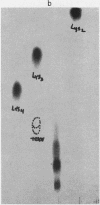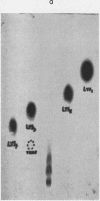Abstract
To study the nature of the antigen-antibody complexes which initiate the specific wheal-and-flare (W & F) reaction in sensitized man, a homologous series of bivalent, oligovalent, and multivalent benzylpenicilloyl (BPO) haptens were quantitatively compared for their effectiveness in eliciting W & F in BPO-sensitized human subjects.
A series of seven divalent haptens were capable of eliciting W & F, but these generally were not maximally effective elicitors. Of the divalent haptens, those with separation chains of 8 or 13 A were the most effective. Of the oligovalent haptens, maximal effectiveness was attained with BPO6-lysine7, and not with BPO2-lysine3 or BPO4-lysine4, i.e., haptens which are 6- 3- and 4-valent, respectively, from a chemical point of view. However, evidence was obtained from quantitative precipitation experiments which indicated that BPO6-lysine7 functions as a trivalent hapten immunologically, i.e., capable of binding three antibody molecules per mole hapten. Large molecularsized haptens with immunological valences of 7 or 12, but in which the haptenic groups were widely separated, were comparatively ineffective elicitors of W & F. In individual subjects, threshold W & F reactions were obtained with equimolar concentrations of the differently sized divalent, oligovalent, and multivalent haptens.
The results demonstrate that for maximally effective elicitation of W & F by haptens, trivalency with optimal distances of separation of haptenic groups is necessary and sufficient. These results indicate the requirement for the formation of a high energy complex of two or three membrane-fixed skin-sensitizing antibody molecules closely bridged together by the elicitor hapten as the initiator of the W & F reaction.
Full text
PDF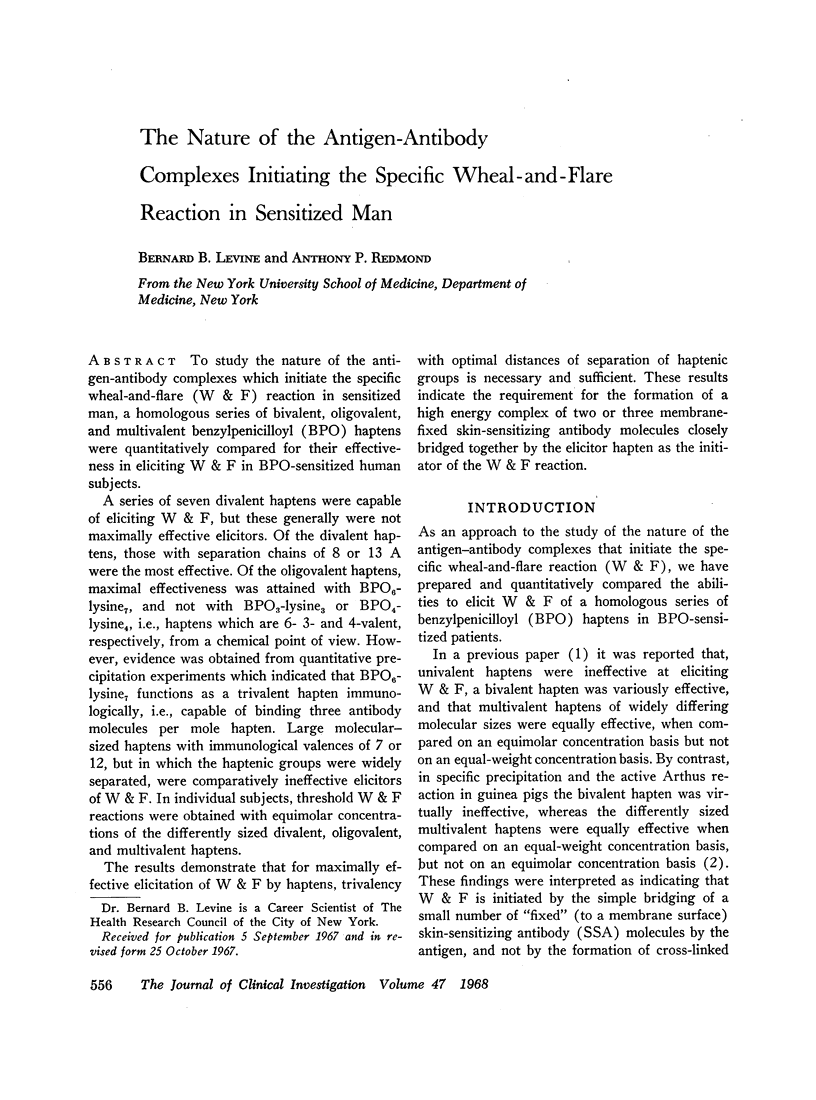
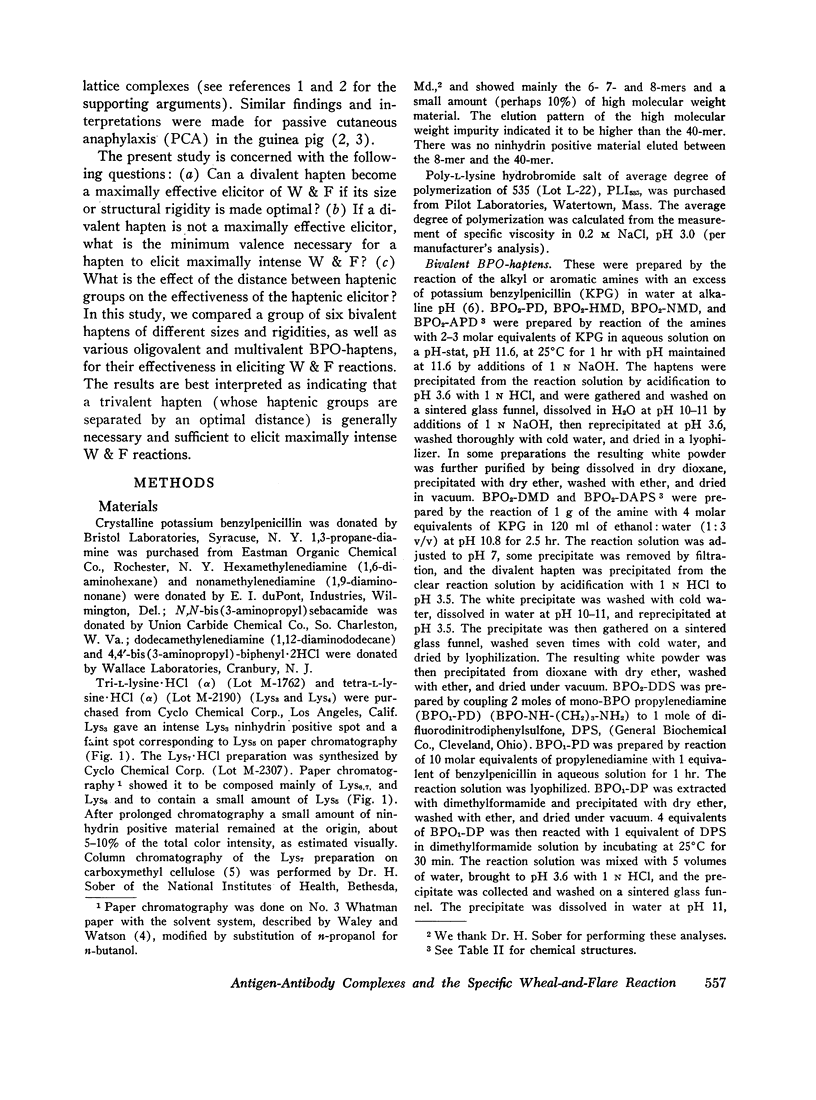
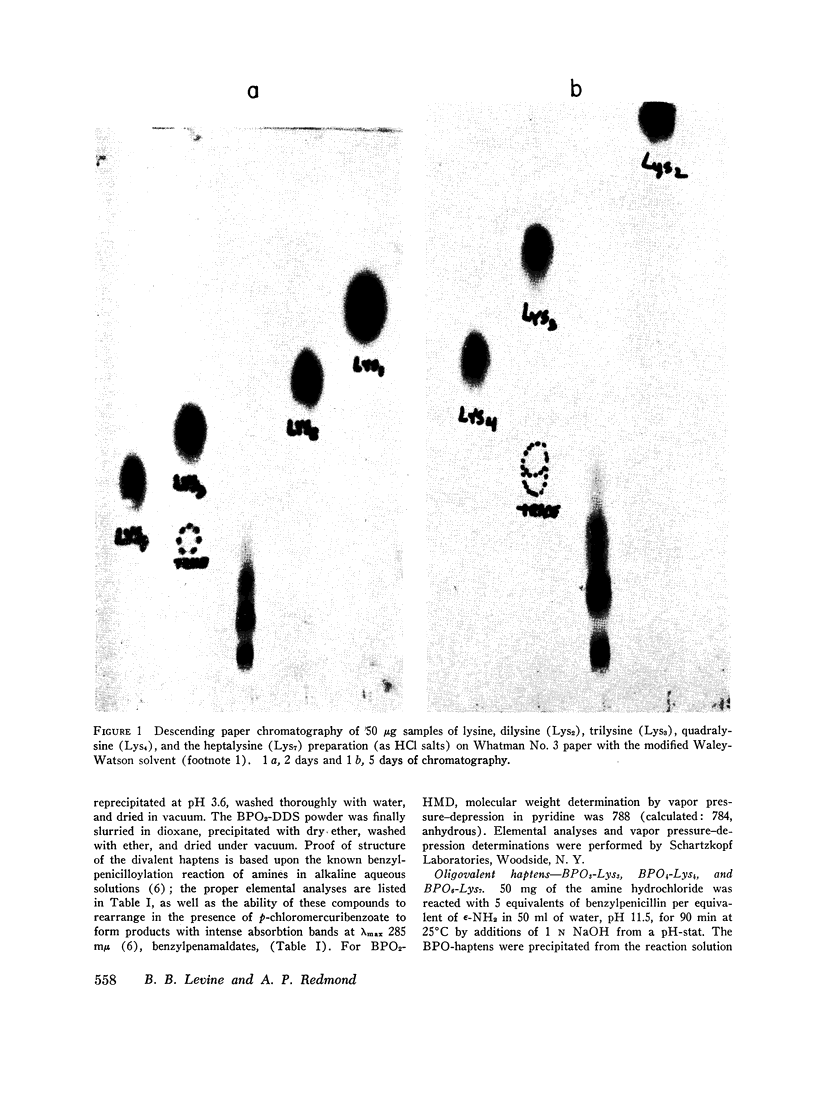
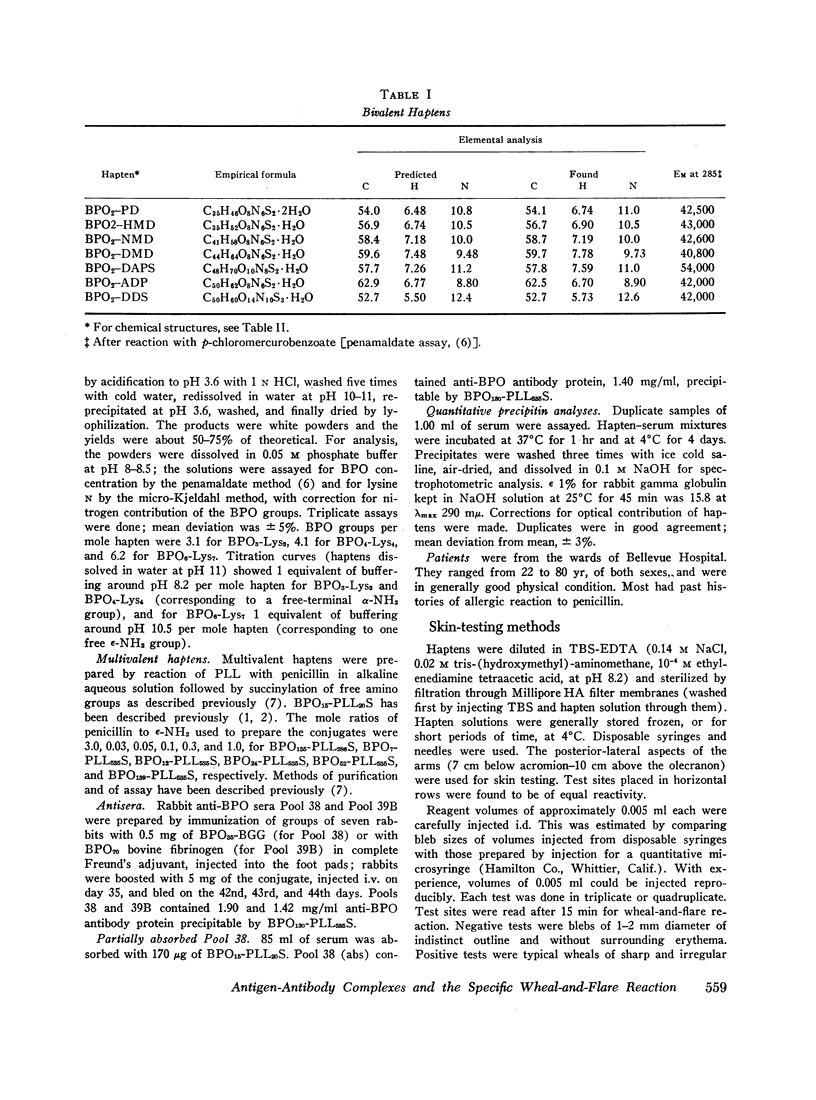
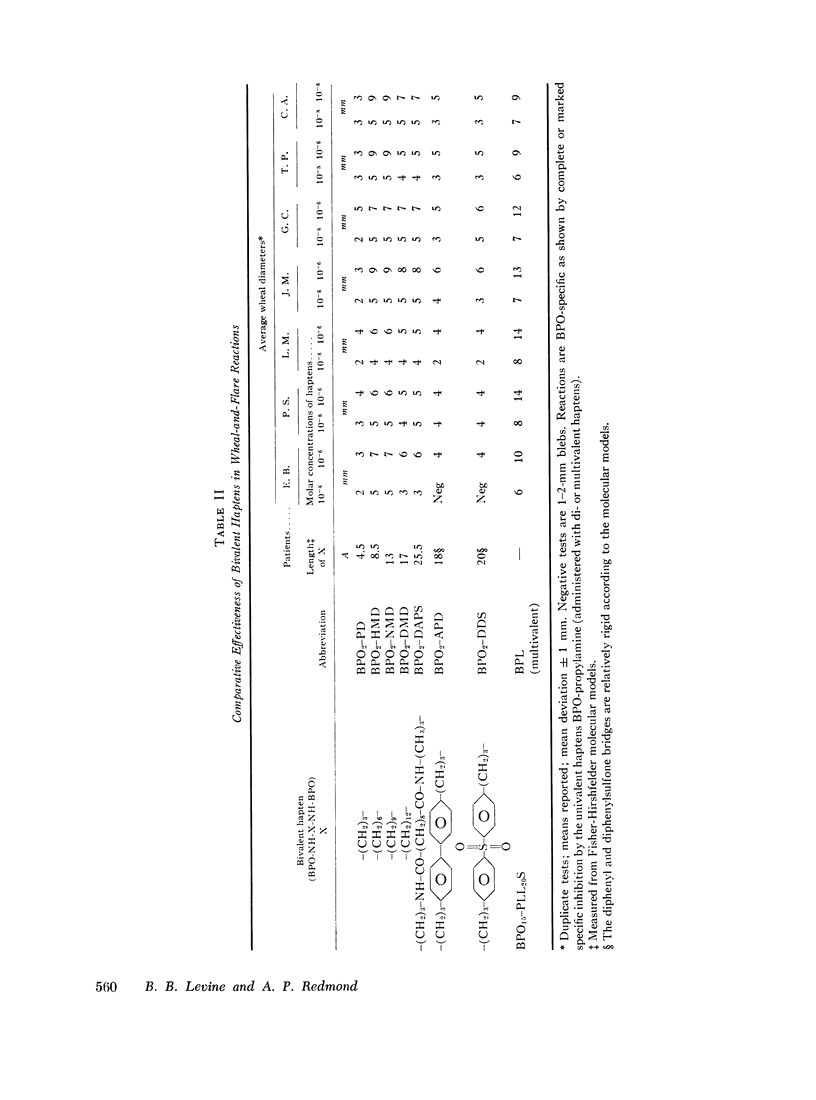
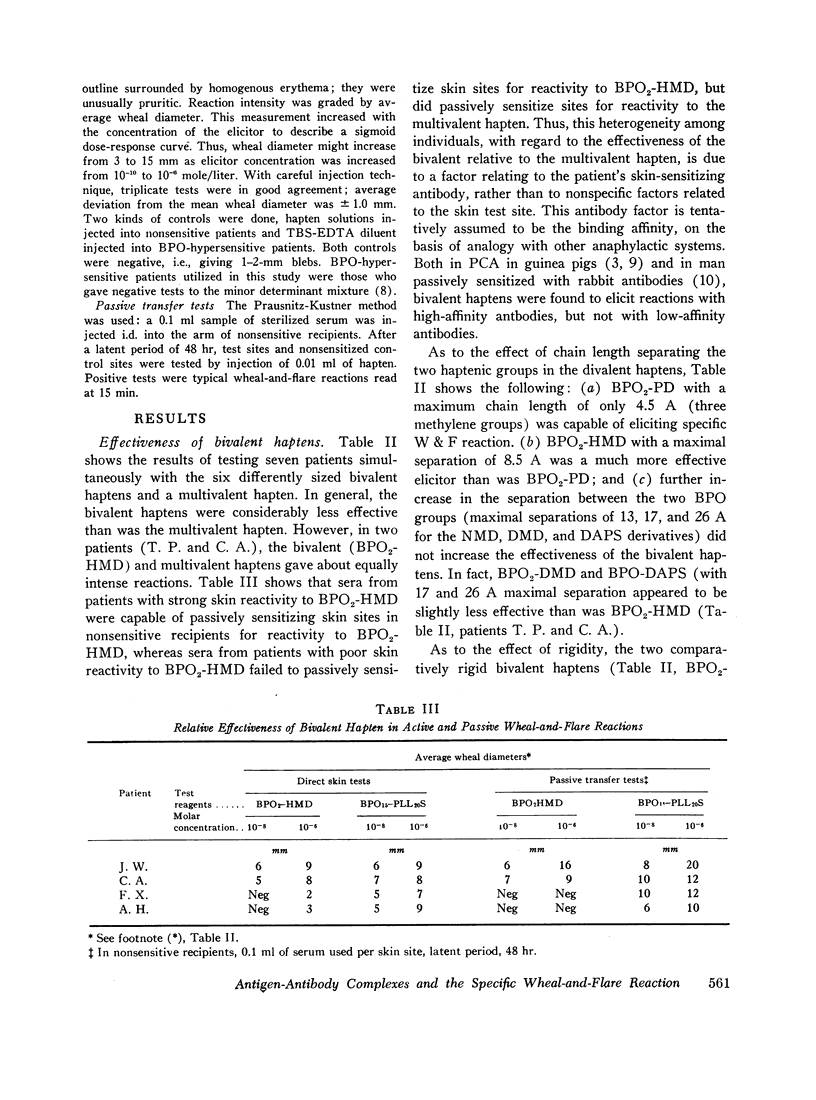
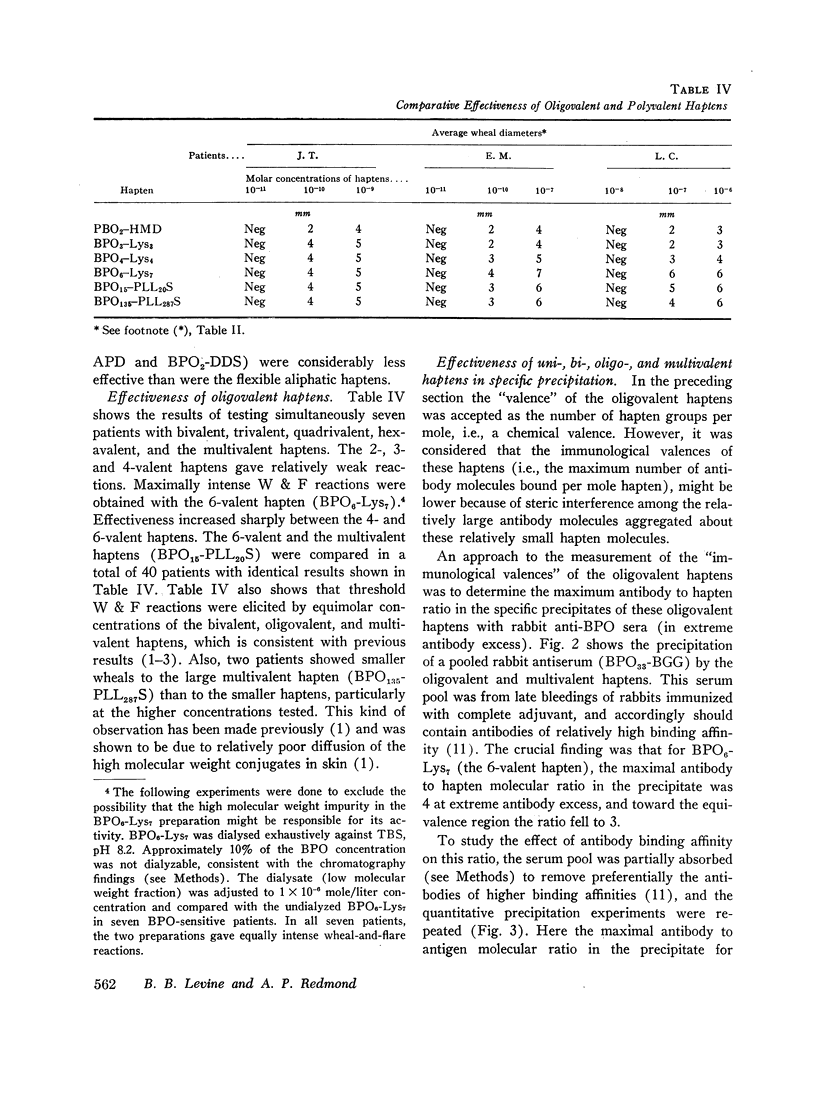
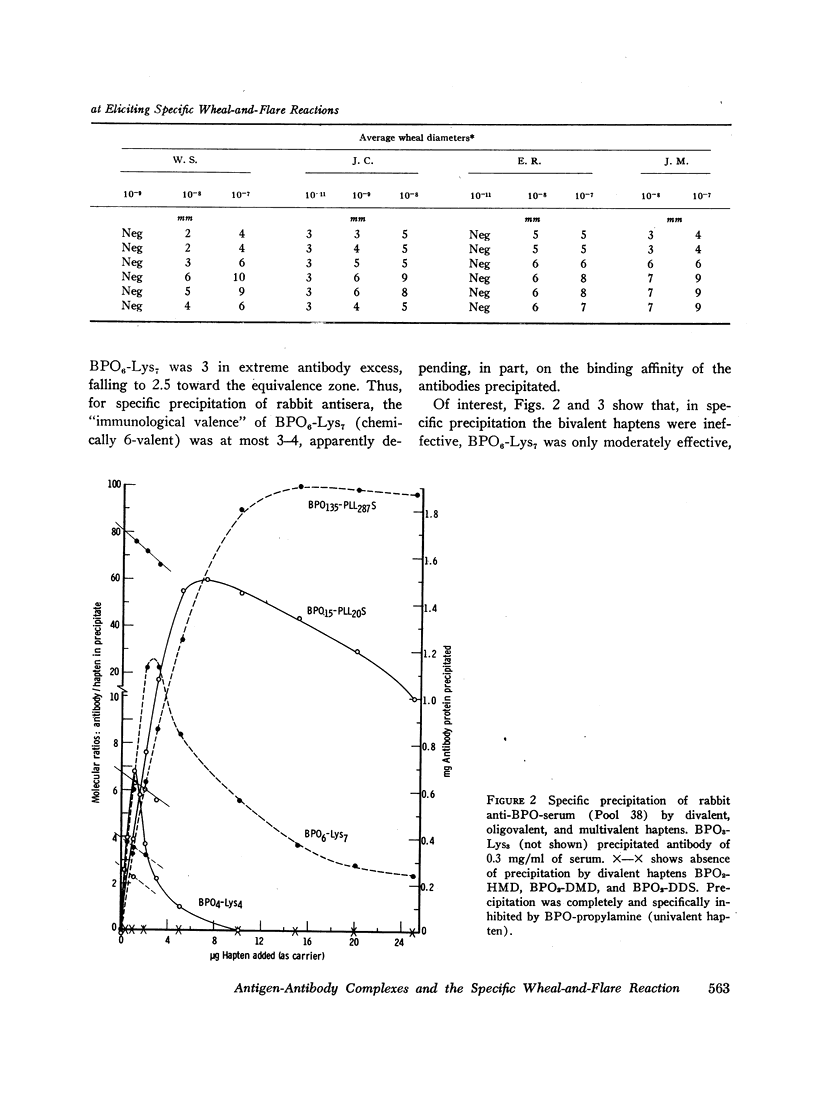
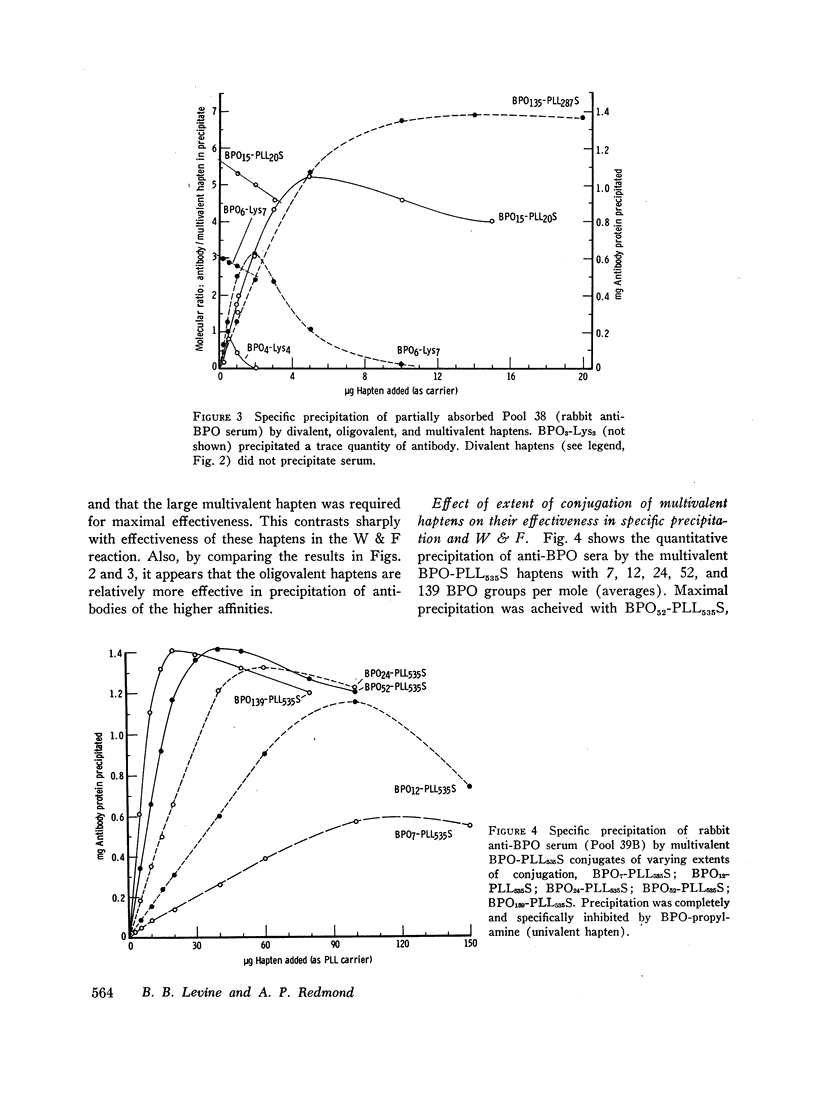
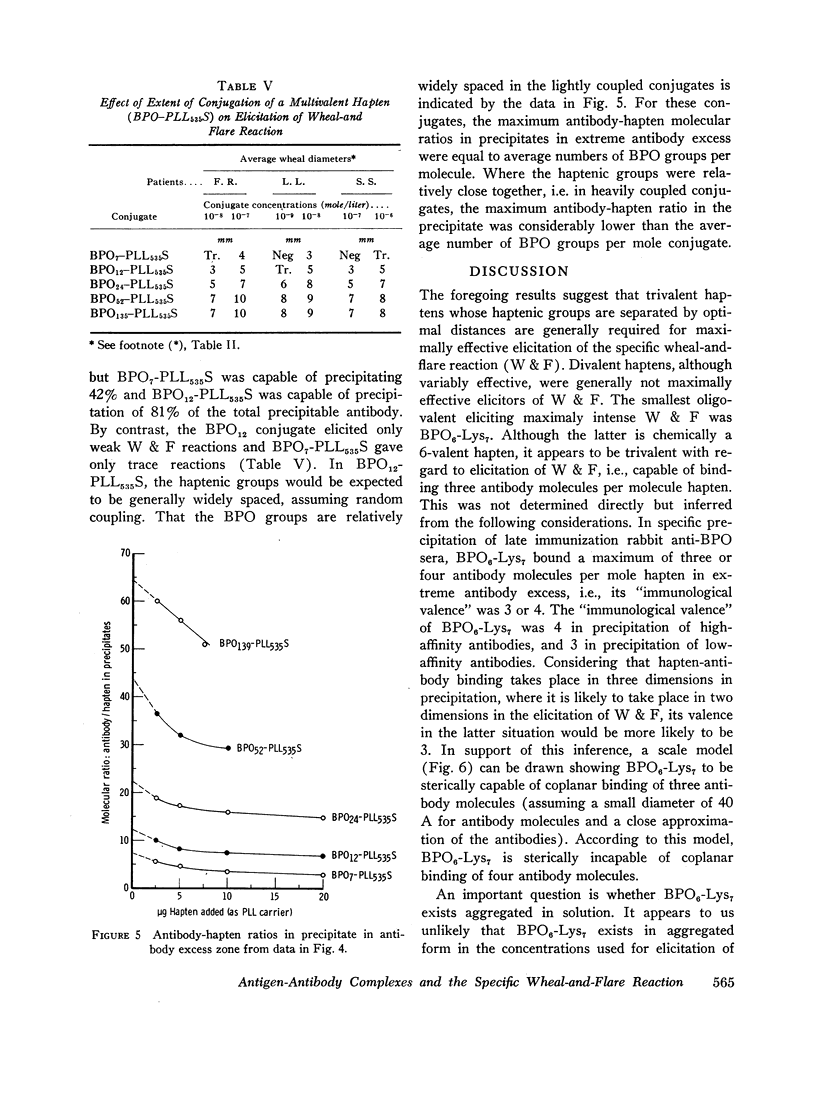

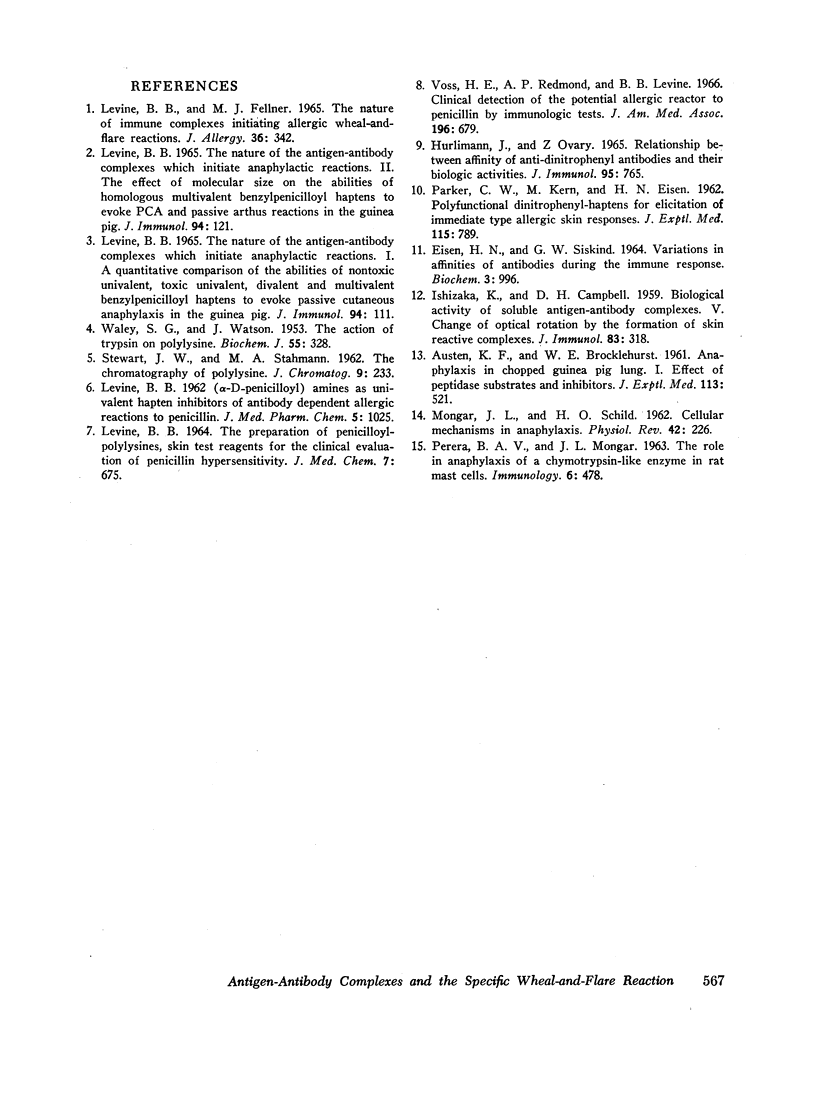
Images in this article
Selected References
These references are in PubMed. This may not be the complete list of references from this article.
- AUSTEN K. F., BROCKLEHURST W. E. Anaphylaxis in chopped guinea pig lung. I. Effect of peptidase substrates and inhibitors. J Exp Med. 1961 Mar 1;113:521–539. doi: 10.1084/jem.113.3.521. [DOI] [PMC free article] [PubMed] [Google Scholar]
- EISEN H. N., SISKIND G. W. VARIATIONS IN AFFINITIES OF ANTIBODIES DURING THE IMMUNE RESPONSE. Biochemistry. 1964 Jul;3:996–1008. doi: 10.1021/bi00895a027. [DOI] [PubMed] [Google Scholar]
- Hurlimann J., Ovary Z. Relationship between affinity of anti-dinitrophenyl antibodies and their biologic activities. J Immunol. 1965 Oct;95(4):765–770. [PubMed] [Google Scholar]
- ISHIZAKA K., CAMPBELL D. H. Biologic activity of soluble antigen-antibody complexes. V. Change of optical rotation by the formation of skin reactive complexes. J Immunol. 1959 Sep;83:318–326. [PubMed] [Google Scholar]
- LEVINE B. B. N(ALPHA-D-PENICILLOYL) AMINES AS UNIVALENT HAPTEN INHIBITORS OF ANTIBODYDEPENDENT ALLERGIC REACTIONS TO PENICILLIN. J Med Pharm Chem. 1962 Sep;91:1025–1034. doi: 10.1021/jm01240a016. [DOI] [PubMed] [Google Scholar]
- LEVINE B. B. THE NATURE OF THE ANTIGEN-ANTIBODY COMPLEXES WHICH INITIATE ANAPHYLACTIC REACTIONS. II. THE EFFECT OF MOLECULAR SIZE ON THE ABILITIES OF HOMOLOGOUS MULTIVALENT BENZYLPENICILLOYL HAPTENS TO EVOKE PCA AND PASSIVE ARTHUS REACTIONS IN THE GUINEA PIG. J Immunol. 1965 Jan;94:121–131. [PubMed] [Google Scholar]
- LEVINE B. B. THE PREPARATION OF PENICILLOYL-POLYLYSINES, SKIN TEST REAGENTS FOR THE CLINICAL EVALUATION OF PENICILLIN HYPERSENSITIVITY. J Med Chem. 1964 Sep;7:675–676. doi: 10.1021/jm00335a030. [DOI] [PubMed] [Google Scholar]
- MONGAR J. L., SCHILD H. O. Cellular mechanisms in anaphylaxis. Physiol Rev. 1962 Apr;42:226–270. doi: 10.1152/physrev.1962.42.2.226. [DOI] [PubMed] [Google Scholar]
- PARKER C. W., KERN M., EISEN H. N. Polyfunctional dinitrophenyl haptens as reagents for elicitation of immediate type allergic skin responses. J Exp Med. 1962 Apr 1;115:789–801. doi: 10.1084/jem.115.4.789. [DOI] [PMC free article] [PubMed] [Google Scholar]
- PERERA B. A., MONGAR J. L. THE ROLE IN ANAPHYLAXIS OF A CHYMOTRYPSIN-LIKE ENZYME IN RAT MAST CELLS. Immunology. 1963 Sep;6:478–483. [PMC free article] [PubMed] [Google Scholar]
- STEWART J. W., STAHMANN M. A. The chromatography of polylysine. J Chromatogr. 1962 Oct;9:233–235. doi: 10.1016/s0021-9673(00)80766-9. [DOI] [PubMed] [Google Scholar]
- WALEY S. G., WATSON J. The action of trypsin on polylysine. Biochem J. 1953 Sep;55(2):328–337. doi: 10.1042/bj0550328. [DOI] [PMC free article] [PubMed] [Google Scholar]



